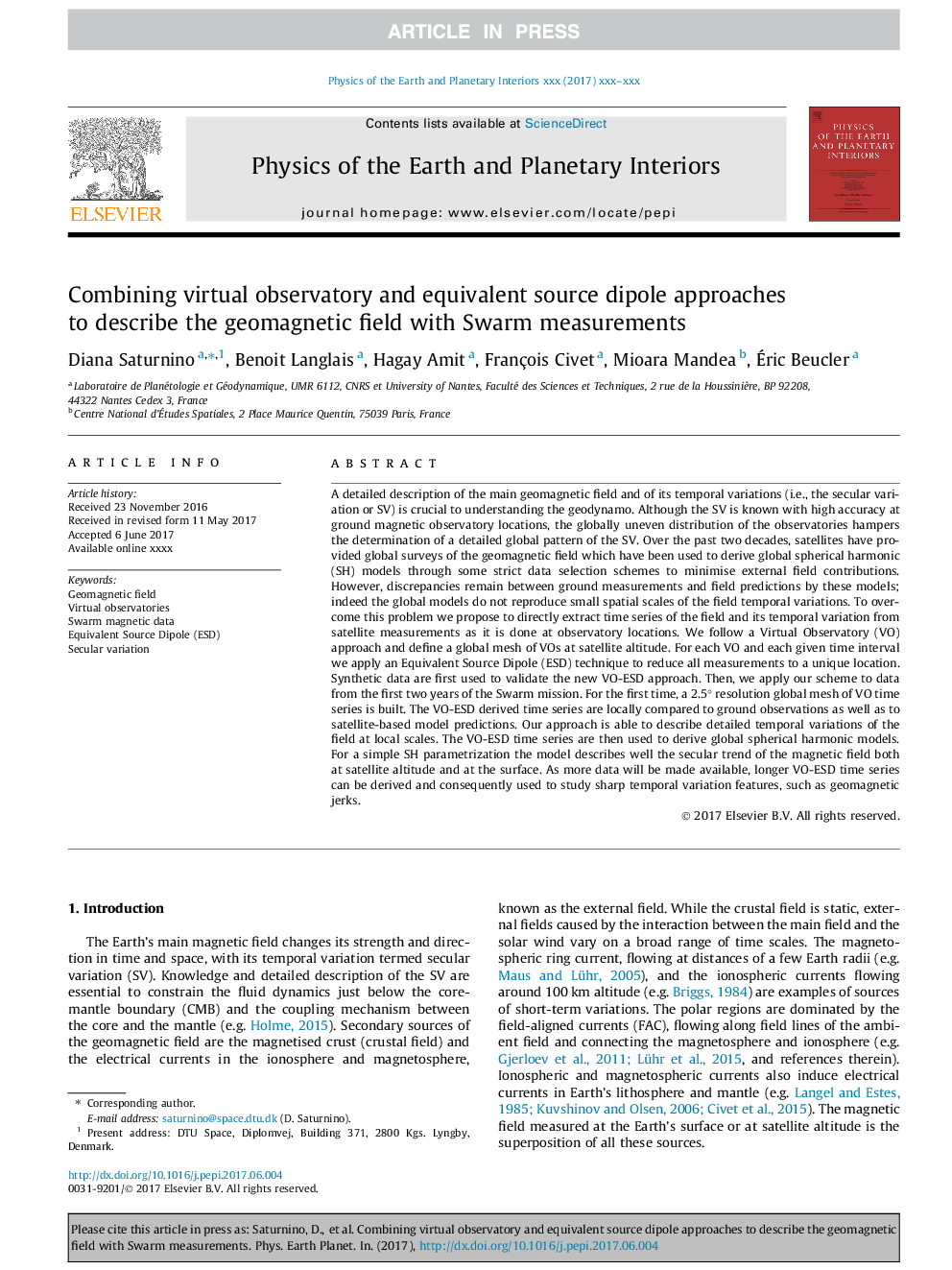| کد مقاله | کد نشریه | سال انتشار | مقاله انگلیسی | نسخه تمام متن |
|---|---|---|---|---|
| 8915726 | 1641464 | 2018 | 16 صفحه PDF | دانلود رایگان |
عنوان انگلیسی مقاله ISI
Combining virtual observatory and equivalent source dipole approaches to describe the geomagnetic field with Swarm measurements
دانلود مقاله + سفارش ترجمه
دانلود مقاله ISI انگلیسی
رایگان برای ایرانیان
موضوعات مرتبط
مهندسی و علوم پایه
علوم زمین و سیارات
فیزیک زمین (ژئو فیزیک)
پیش نمایش صفحه اول مقاله

چکیده انگلیسی
A detailed description of the main geomagnetic field and of its temporal variations (i.e., the secular variation or SV) is crucial to understanding the geodynamo. Although the SV is known with high accuracy at ground magnetic observatory locations, the globally uneven distribution of the observatories hampers the determination of a detailed global pattern of the SV. Over the past two decades, satellites have provided global surveys of the geomagnetic field which have been used to derive global spherical harmonic (SH) models through some strict data selection schemes to minimise external field contributions. However, discrepancies remain between ground measurements and field predictions by these models; indeed the global models do not reproduce small spatial scales of the field temporal variations. To overcome this problem we propose to directly extract time series of the field and its temporal variation from satellite measurements as it is done at observatory locations. We follow a Virtual Observatory (VO) approach and define a global mesh of VOs at satellite altitude. For each VO and each given time interval we apply an Equivalent Source Dipole (ESD) technique to reduce all measurements to a unique location. Synthetic data are first used to validate the new VO-ESD approach. Then, we apply our scheme to data from the first two years of the Swarm mission. For the first time, a 2.5° resolution global mesh of VO time series is built. The VO-ESD derived time series are locally compared to ground observations as well as to satellite-based model predictions. Our approach is able to describe detailed temporal variations of the field at local scales. The VO-ESD time series are then used to derive global spherical harmonic models. For a simple SH parametrization the model describes well the secular trend of the magnetic field both at satellite altitude and at the surface. As more data will be made available, longer VO-ESD time series can be derived and consequently used to study sharp temporal variation features, such as geomagnetic jerks.
ناشر
Database: Elsevier - ScienceDirect (ساینس دایرکت)
Journal: Physics of the Earth and Planetary Interiors - Volume 276, March 2018, Pages 118-133
Journal: Physics of the Earth and Planetary Interiors - Volume 276, March 2018, Pages 118-133
نویسندگان
Diana Saturnino, Benoit Langlais, Hagay Amit, François Civet, Mioara Mandea, Ãric Beucler,